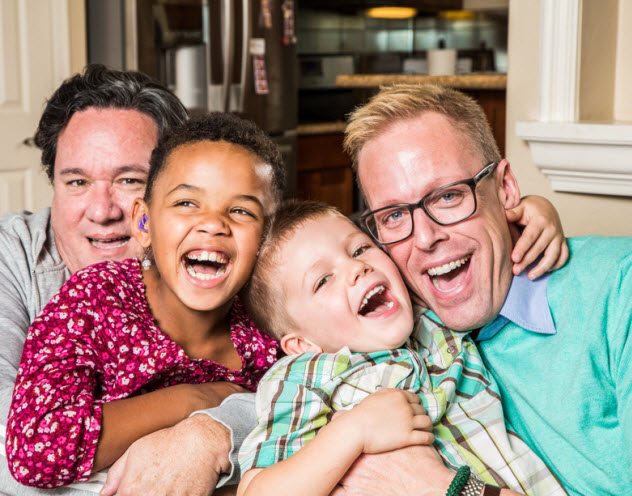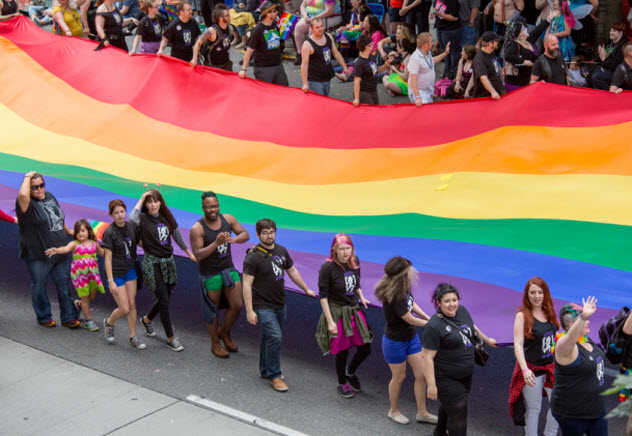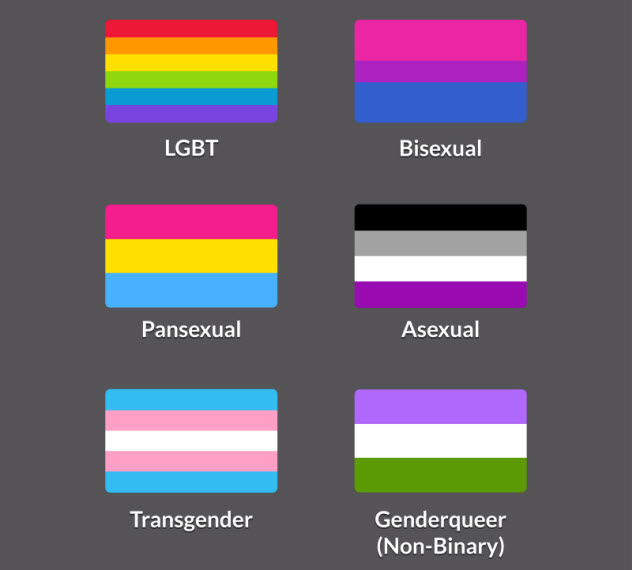 Weird Stuff
Weird Stuff  Weird Stuff
Weird Stuff  Mysteries
Mysteries 10 Tragic Disappearances and Deaths in Joshua Tree National Park
 History
History 10 Ways Childhood Really Sucked in the Old West
 Music
Music 10 Name Origins of Famous Bands from the 1990s
 Religion
Religion 10 Biggest Turnarounds by the Catholic Church
 Weird Stuff
Weird Stuff 10 Unbelievable Times Laws Had Unintended Consequences
 Humans
Humans Ten Historic Women Who Deserve Way More Credit Than They Got
 Movies and TV
Movies and TV 10 Films That Spawned Major Lawsuits
 History
History Ten Times Towns Were Wiped Off the Face of the Earth
 Creepy
Creepy 10 of the Most Disturbingly Haunted Public Houses in the UK
 Weird Stuff
Weird Stuff 10 Niche Subcultures That Are More Popular Than You Might Think
 Mysteries
Mysteries 10 Tragic Disappearances and Deaths in Joshua Tree National Park
 History
History 10 Ways Childhood Really Sucked in the Old West
Who's Behind Listverse?

Jamie Frater
Head Editor
Jamie founded Listverse due to an insatiable desire to share fascinating, obscure, and bizarre facts. He has been a guest speaker on numerous national radio and television stations and is a five time published author.
More About Us Music
Music 10 Name Origins of Famous Bands from the 1990s
 Religion
Religion 10 Biggest Turnarounds by the Catholic Church
 Weird Stuff
Weird Stuff 10 Unbelievable Times Laws Had Unintended Consequences
 Humans
Humans Ten Historic Women Who Deserve Way More Credit Than They Got
 Movies and TV
Movies and TV 10 Films That Spawned Major Lawsuits
 History
History Ten Times Towns Were Wiped Off the Face of the Earth
 Creepy
Creepy 10 of the Most Disturbingly Haunted Public Houses in the UK
10 Enlightening Facts About Gay And Trans People
Within the last few decades, public acceptance of lesbian, gay, bisexual, and trans relationships and marriages has steadily increased, from abysmal levels in the 1970s (with a 1973 poll revealing 70 percent of the American public holding the opinion that gay relationships “are always wrong”) to an outright majority today.
However, it would be impossible to deny that these are still dangerous times in which to be gay or trans, as recent events have shown us that anti-LGBT hate is still very alive. Since people tend to hate what they fear and fear what they do not understand, we thought it might be helpful to put forth some interesting and perhaps underrecognized facts about the LGBT community.
10 They Are Fewer Than You Probably Think

Recent Gallup Poll data shows that—with a couple of exceptions—the gay community is spread quite evenly across the United States, with only about 3.5 percentage points separating the highest concentration in San Francisco (with 6.2 percent of the population) and the lowest concentration in Birmingham, Alabama (with 2.6 percent). If those numbers surprise you, though, you’re not alone. Americans tend to vastly overestimate the percentage of the population which they believe to be gay.
Asked by pollsters to take their best guess, a random sampling of over 1,000 adults in 2015 arrived at an average number of 23 percent—about six times the figure of 3.8 percent, the most recent one obtained by Gallup. More conservative respondents tended to guess lower than their more liberal counterparts, but fewer than 1 in 10 respondents guessed correctly.
9 Gay People Tend To Be Better Educated (And Better Off) Than Straight People

According to the Williams Institute, an LGBT think tank at the University of California–Los Angeles, about 46 percent of those in same-sex relationships have college degrees. This may not sound particularly surprising until you consider that the number for heterosexual couples is close to 30 percent.
According to census data taken between 2006 and 2011, this translates directly into economic benefit. Same-sex couples reported a higher median income than opposite-sex couples by a significant margin. But perhaps surprisingly, gay men in relationships make on average slightly less than their heterosexual counterparts. This is offset by the impressive earning power of gay women in relationships, who reported an average income ($38,000) that clobbers that reported by straight women in relationships ($30,000).
In addition, a survey of 1,000 LGBT respondents without regard to relationship status (conducted by financial juggernaut Prudential) discovered similarly high earnings coupled with a lack of severe debt. Unfortunately, at the time the survey was conducted in 2012, uncertainty about access to benefits in the future was cited as one potentially very significant reason why LGBT folks tend to be comparatively frugal. With the US Supreme Court’s landmark 2015 ruling recognizing same-sex marriage nationwide, that access is now a legal right.
8 The Oldest LGBT Rights Organization Dates To 1950

Most people tend to think of the movement for LGBT rights as a relatively recent one. But its oldest foundation was established in secret by an avid communist at a time when it was illegal for gay people to gather together in public, the term “gay rights” did not exist, and the American Psychiatric Association classified homosexuality as a mental disease.
Harry Hay, a 48-year-old married father of two, established the Mattachine Foundation with seven other men in 1950. For several years, the group simply held large, open meetings of gay men and women, most of whom had never been able to openly talk about their experiences in any way, shape, or form.
These meetings not only helped foster a heretofore underdeveloped sense of community but allowed then-radical ideas—such as the concept of gay men and women as a minority class deserving of equal rights and homosexuality as a genetic disposition rather than an illness—to be discussed openly. It eventually solidified into a Statement of Mission and Purposes, reading in part: “Mattachine holds it possible and desirable that a highly ethical homosexual culture emerge, as a consequence of its work, paralleling the emerging cultures of our fellow minorities.”
Unfortunately, the pro-communist background of Hay and several of the other founders prompted a mass resignation in 1953 amid the Red Scare and fears that the organization could be compromised or worse, if investigated. The new leadership severely walked back most of the more “radical” notions, opting for a more accommodating approach that would prove ineffectual. Harry Hay, however, lived to see his original foundation and its goals become the basis for the modern gay rights movement. He died in 2002 at age 90.
7 Gayness Has A Firm Biological Basis

Although the purpose of this article is to shed light on various aspects of the gay community—mostly for the benefit of those who may not be terribly familiar with LGBT issues—we are going to assume that we won’t need to disabuse you of the notion that being gay is a “lifestyle choice,” a ridiculous assertion if there ever was one. That said, science has long struggled with the question of whether same-sex attraction is due to environmental and sociological factors or, in fact, has a biological basis. Although the answer may lie somewhere in between, recent studies are showing clearly that a biological component is necessary to be gay.
In one of the most recent studies, the genetic code of 818 gay men—414 sets of twins—was analyzed. While the long-sought “gay gene” was not found, at least five specific areas of the human genome were found to be connected to male homosexuality—two that had been identified in previous studies and three additional ones. While cautioning that such complex matters as human sexuality are sure to be influenced by multiple factors, lead scientist Alan Sanders nevertheless declared that the study “erodes the notion that sexual orientation is a choice.”
Elsewhere, another study involving twins by the Academy of Science of South Africa has shown that homosexuality is much more common in identical than fraternal twins, suggesting strongly that it can be inherited—though not necessarily through run-of-the-mill genetics. According to the study, certain genetic markers usually erased from generation to generation can be influenced and changed by environmental factors. This is called “epigenetics.” When these markers are passed on, certain predispositions can follow. In other words, it appears that environment and biology are capable of influencing each other to some degree.
6 Trans People Are Not A Big Deal In Some Cultures

It is safe to say that transgender individuals—those who identify as a gender other than their biological one—have faced and will likely continue to face a uniquely difficult road to acceptance by mainstream society. Despite some recent positive representations in the media and perhaps a generally increased awareness of the subject, trans people tend to be relentlessly stereotyped as “pretenders” to their gender by the ignorant (despite evidence indicating a biological basis for this as well).
They can be particularly vulnerable to bullying and abuse and, accordingly, are at much higher risk for suicide. However, trans people have been viewed very differently in many cultures past and present.
Traditional Hawaiian culture recognizes the existence of something like a third gender called “mahu” that contains aspects of both male and female sexuality. In contrast to being seen as abnormal, this is considered advantageous—particularly in educators who can bring both sides of the human experience. One such modern-day mahu, who has dubbed herself “Hina,” teaches this and other Hawaiian traditions to transgender charter school students, who have flourished under her guidance.
Even today, some cultures simply do not have the general aversion to this concept that most Western cultures persist in having. You may not realize that the government of India officially recognized a third gender in 2014 or that France largely did the same in 2015 (the third gender being “neutral”). For that matter, as we’ve mentioned before, there exists a culture in which trans individuals actually make their transition naturally.
5 Same-Sex Relationships Tend To Be More Equitable

As can be expected, scientific studies of the dynamics of same-sex relationships have increased drastically in recent years. Two such studies, conducted in 2008 and 2014, show that the division of labor in same-sex households—from household chores to money management to parenting—tends to be much more evenly divided than in opposite-sex households.
Interestingly, in opposite-sex relationships, those working fewer hours, earning less income, or both are generally saddled with the bulk of chores and parenting duties. This trend does not seem to carry over to gay relationships.
Researcher Robert-Jay Green, who conducted the 2008 study and has studied LGBT relationships for decades, states what may be an obvious reason for this:
I think it has to do with the basic equality in a relationship. I mean, when you’re both the same gender, you can’t divvy up roles according to gender. On the other hand, because you’re equals, you can’t get away with pulling power techniques on each other because it will only backfire on you when you’re dealing with an equal.
4 Children Of LGBT Parents Generally Thrive

Of all the objections raised about gay marriage by conservatives and the like, the perceived inability of LGBT couples to be effective parents has been one of the most virulent. Despite loudly voiced fears about “confused” children being raised in “amoral” unions, the research has predictably shown that not only are gay parents every bit the equal of straight parents but that gay parents may, in general, actually be better at it.
Once again, one of the primary reasons for this may be one of the most obvious. Almost without exception, gay couples choose to become parents, contrasted with the fully 50 percent of unplanned children born to heterosexual couples. This, of course, translates to more committed and involved parents, which has definitively been shown to have a far greater effect on a child’s well-being than the parent’s sexuality.
Boston University School of Medicine pediatrics professor Benjamin Siegel published a report in 2015—a week before the Supreme Court ruling—drawing upon three decades of data showing that children of gay couples are virtually indistinguishable in reported levels of happiness, grades, achievement, and other markers from children of heterosexual couples. It was his hope that the report would influence the ruling, and while it is unclear if it did, it certainly could not have hurt.
3 Same-Sex Marriage Strengthens The Institution

Speaking of the sanctity of marriage, there is now sufficient long-term hard data to easily refute another conservative rallying point—specifically in the case of the Netherlands, which became the first country to fully legalize same-sex marriage in 2001. The intervening years have shown an effect on the institution of marriage in general that may come as a bit of a surprise.
Simply put, the overall divorce rate in the Netherlands has fallen from 2.3 to 2.1 per 1,000 people. In the meantime, during roughly the same time period, the overall divorce rate throughout the rest of the European Union actually increased from 1.8 to 2.0 per 1,000 people. While there may be other factors at play here, it seems safe to assert that the Netherlands has shown that widespread legalization of same-sex marriage has had no negative impact on the institution.
Moreover, the lower divorce rate may be directly attributable to same-sex couples for one very simple reason: Gay couples get divorced less. The aforementioned Williams Institute crunched the numbers in a 2014 study, showing a divorce rate of 1.1 percent annually for gay couples compared with 2 percent for heterosexual couples. This happened despite the number of same-sex marriages doubling between 2012 and 2013.
2 Equal Rights Have Made Progress But Not Enough

As mentioned in the introduction, public attitudes on LGBT issues have shifted dramatically in recent decades. In the mid-70s, roughly 45 percent of Americans were of the opinion that gay relationships—not marriages, just relationships—should be illegal, an equal percentage to those expressing the opposite opinion. Today, the numbers are 28 percent to 68 percent, but this still means that 28 percent believe that gayness should be outlawed in the present day.
Since 1980, the year that a major US political party first endorsed a gay rights platform, each victory for the LGBT community has been met with an arguably greater setback. From the Reagan administration’s deplorable disregard of the burgeoning AIDS epidemic to “Don’t Ask, Don’t Tell” and the laughably named Defense of Marriage Act in the 1990s to present-day so-called “religious freedom” bills designed to provide loopholes for legalized discrimination, it is clear that a battle is being waged—one that must be countered with plain discourse, education, and the willingness to call out and stand up to bigotry.
Of course, in a society in which “traditional” gender roles are so deeply ingrained, this may unfortunately prove to be even more difficult than the past would indicate. It seems that many of us have an exceedingly hard time wrapping our heads around the fact that . . .
1 The Concept Of Gender Identity Is Evolving Constantly

In the 1990s, the term “genderqueer” was coined as a sort of anti-label to describe those who do not identify only with their biological gender, although they do not necessarily identify completely with the opposite gender, either. Though largely foreign to the mainstream, this term persists today as a reflection of the understanding that human sexuality is not necessarily binary and that sexual identification and preference can fall somewhere on a scale in between masculine and feminine. Individuals who identify as genderqueer, therefore, vary widely in their experiences and perspectives and cannot easily be lumped into an existing category.
For example, genderqueer individuals may or may not embrace the concept of gender fluidity—the notion that one may identify as more masculine one day (or week or month or year) and more feminine the next, with all that implies in terms of how they emotionally and mentally perceive and interact with the world at any given time.
Concepts like these, largely absent from mainstream discourse until very recently, represent what will likely be new frontiers in society’s understanding of and coming to terms with the multitude of expressions of human sexuality. This is to say that, for as far as the discussion has come, it is really only beginning and will continue for the foreseeable future—hopefully without the ignorance and fear that has colored much of it thus far.








